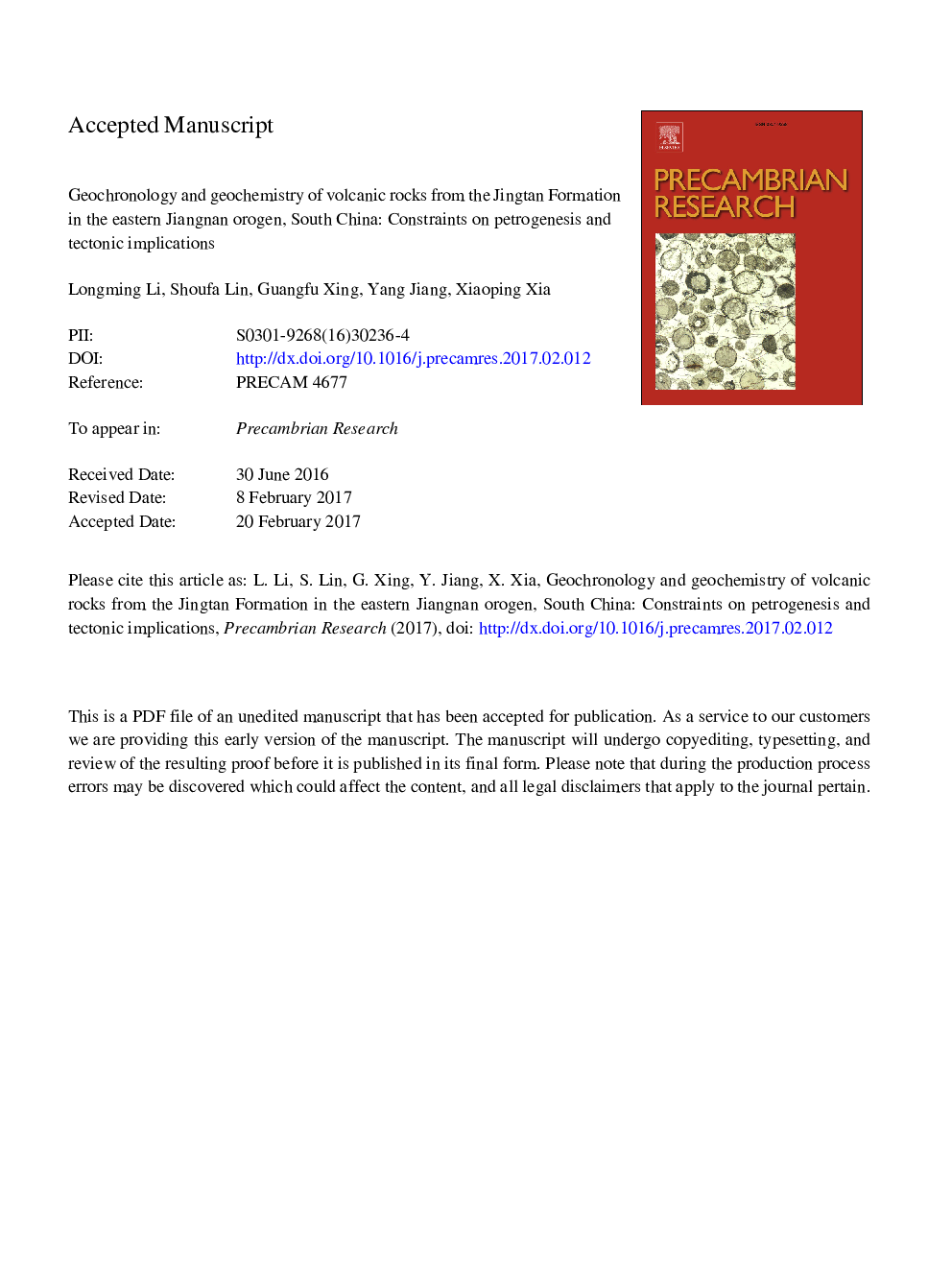| Article ID | Journal | Published Year | Pages | File Type |
|---|---|---|---|---|
| 8912602 | Precambrian Research | 2018 | 54 Pages |
Abstract
An integrated study of zircon U-Pb geochronology and geochemistry, together with Nd-Hf isotopes, have been carried out on the rhyodacite and rhyolitic tuff of the Jingtan Formation in the eastern part of the Jiangnan orogen. SIMS zircon U-Pb dating of two samples yielded weighted mean 206Pb/238U ages of 784 ± 6 Ma and 788 ± 6 Ma, respectively. Geochemically, they are peraluminous (A/CNK mostly around 1.2) and are characterized by enrichments in Rb, Th, REEs and HFSEs (e.g. Zr and Y) but depletions in Ba, Sr, P, Eu and Ti. The volcanic rocks show a clear A-type granite geochemical signature with high total alkalis (K2O + Na2O = 5.3-7.64 wt%), FeOt/MgO ratios and low CaO, MgO and TiO2 contents. They have negative whole-rock εNd(t) (â4.2 to â1) and positive zircon εHf(t) (+1.26 to +11.6) values, illustrating decoupled Nd-Hf isotopes which may be genetically related to their petrogenesis process. The positive εHf(t) values and juvenile THfDM1 (0.89-1.3 Ga) of zircons indicate that the volcanic rocks may have been derived from the partial melting of the Neoproterozoic to late Mesoproterozoic crustal materials. Combined with the occurrence of significant volumes of contemporary bimodal volcanic rocks in eastern section of the Jiangnan orogen, it is inferred that the Jingtan felsic volcanic rocks formed during post-collisional extension shortly after the final amalgamation of Yangtze and Cathaysia blocks.
Related Topics
Physical Sciences and Engineering
Earth and Planetary Sciences
Geochemistry and Petrology
Authors
Longming Li, Shoufa Lin, Guangfu Xing, Yang Jiang, Xiaoping Xia,
